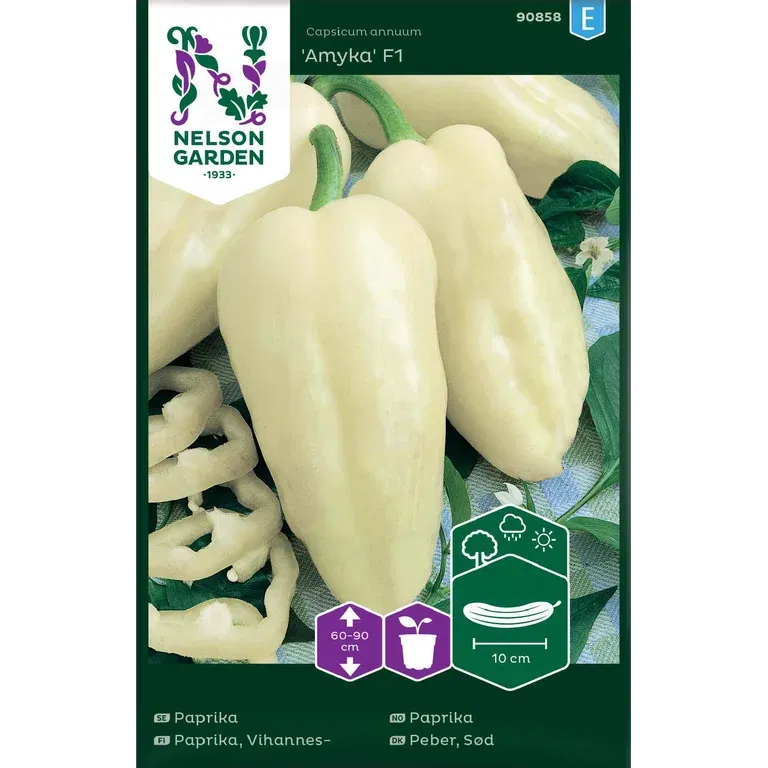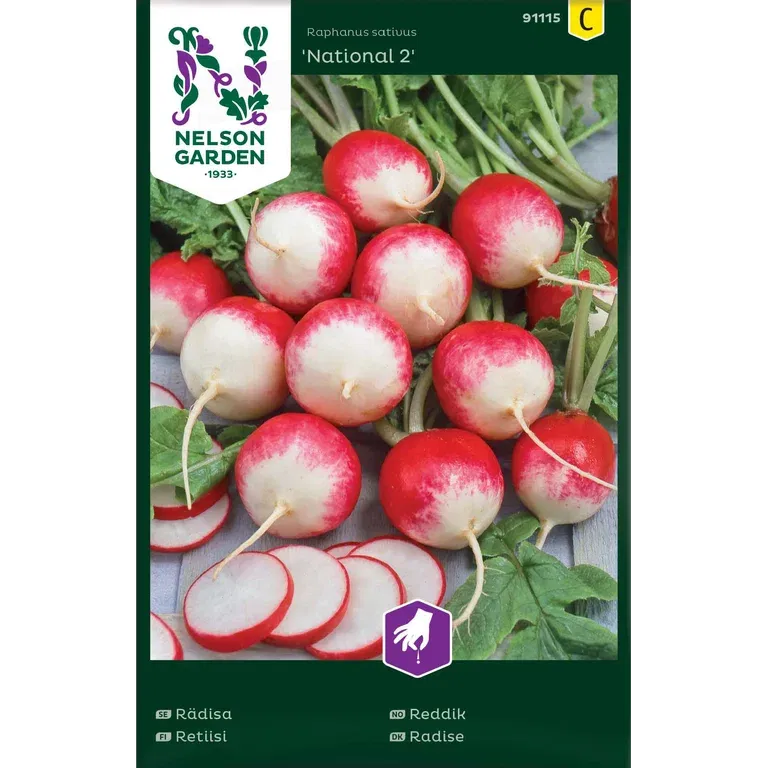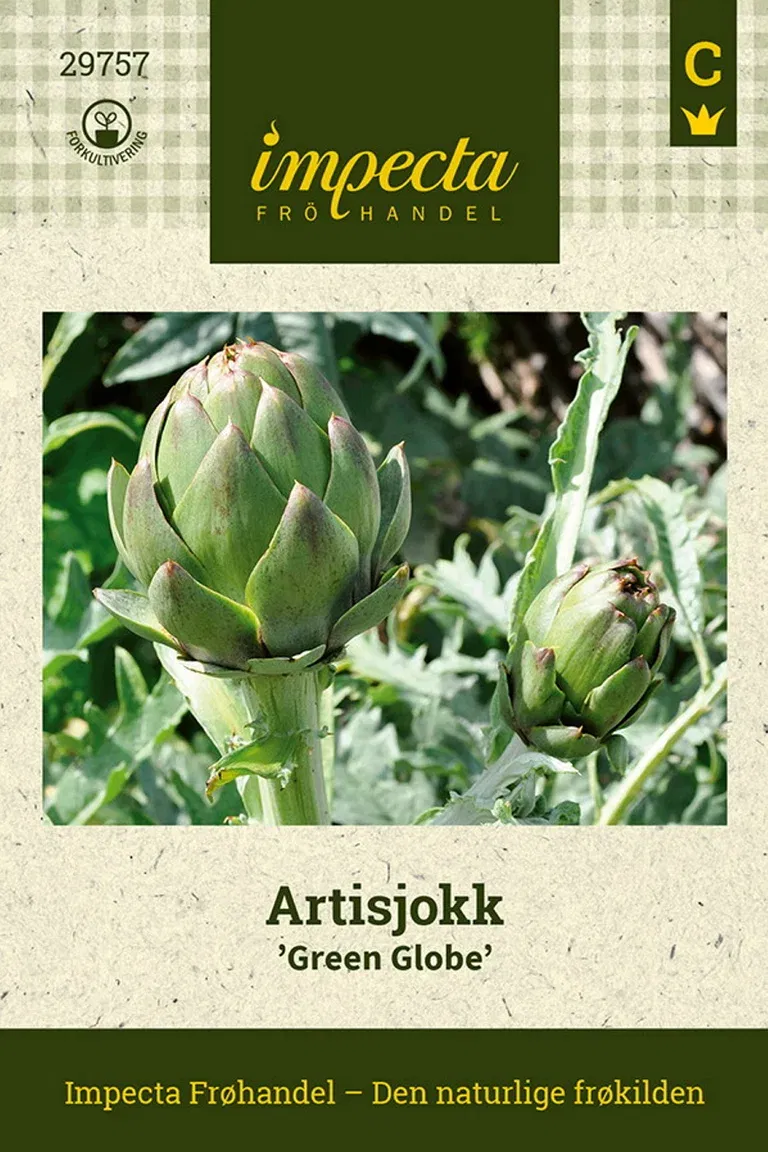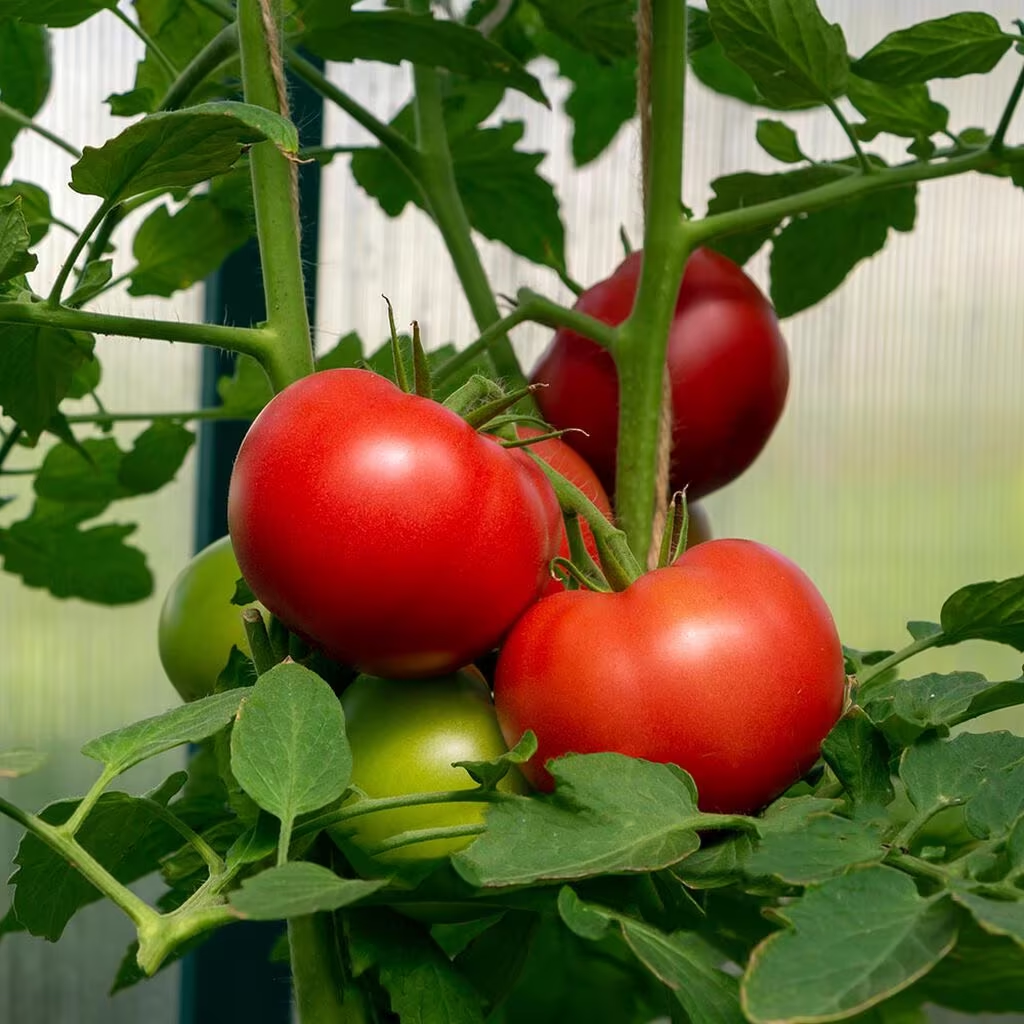Guaranteed gardening joy with ready-made vegetable plants
Did you forget to sow chili in January, won't your cabbage plants grow this year or do you just not have room for a lot of pots inside? Who says you have to do everything yourself? Buy ready-made vegetable plants, and harvest from your own patio without stress. Here you get gardener Malou Augustin's best tips.

I love pre-grown vegetable plants, and I see them as both an extra insurance policy and a wonderful shortcut. By buying pre-grown plants, I don't have to sow and pre-cultivate everything myself - and I can test several different varieties without buying a bunch of seed packets from which I only use a couple of seeds.
If I don't have time to sow chili early enough to get a good harvest, I make sure to buy some nice chili plants of different varieties instead. With pre-grown plants, I can also have the luxury of picking my own tomatoes as early as May, and at the same time know that the plant can give me tomatoes all summer long if I just take care of it right. I can also plant some delicious leek and cabbage plants for an early harvest, before my own seeds have really started. And a beautiful eggplant can fit perfectly on the terrace with its beautiful flowers and fruits.
But there are more and bigger reasons why I love all the pre-grown vegetable plants so much.
The ready-made vegetable plants make growing, and the joy of growing, more accessible to everyone! When you can buy ready-grown plants, the most work is already done – and it becomes much easier to both succeed with and enjoy the plants and the harvest!

Which ready-made vegetable plants should I buy?
Some vegetable plants take a long time to produce a proper harvest, and it is perfect to buy ready-made plants for these. Especially if you forgot to sow them in the spring-winter. This applies to artichokes, chilies and peppers, which should preferably be sown as early as January.
If you want to try some new varieties, but perhaps don't want so many of each variety, it is very easy to buy a ready-made plant as a taste test. For example, you can test a few different types of tomatoes and chilies.
In addition, the ready-made plants are perfect for getting an early harvest. Both cabbage plants, leeks and lettuce are ready earlier than if you sow yourself. In this sense, the growing season is also longer with ready-made plants.
The plants I am most looking forward to are the tomatoes and eggplants, because they already have ripe fruits that we can enjoy right away! What's more, they look super nice in pots and on the patio. At the bottom of the article you will find all the ready-made vegetable plants on my shopping list.

Take care of your newly purchased plants
Feel free to repot the new vegetable plants in larger pots. This will add nutrients and give the roots more space, so that the whole plant can grow larger.
It is especially important to repot when there are several plants in the same pot, as is often the case with corn and leeks, for example. When it comes to leeks, I also cut off the tops - so that the plants grow stronger. Although it may be fine to let the plants grow together in a common pot, it is worth repotting them so that there is one plant in each pot. Then they can grow even stronger before you plant them out.
Fertilize the plants with liquid nutrition, and make sure to keep the soil evenly moist. I use Plantasjens liquid fertilizer, which is made from fermented green organic waste.
A sunny windowsill can work well, but to give the plants the best conditions, grow lights/plant lights are a good tip. With only daylight, you can expect the plants to be a little more frail and less lush.

Harden off vegetable plants before planting them out
The vegetable plants have grown indoors and need to be hardened off before they are planted outdoors or in pots. This means that they must gradually get used to living outdoors.
Start by putting them outside for an hour during the day when it is above zero outside. Different plants need different temperatures to thrive. Chili needs at least 10 degrees, and tomatoes 5 degrees. Wait until it is that warm outside before you start hardening them off.
Place the plants in a warm place in the shade, and preferably use a fiber cloth to protect them from wind and sun.
Gradually increase the time the plants are outside, and put them a little further out into the light with each passing day. After a week, the plants can be planted out, provided that the danger of night frost is over. But, again, remember that the plants are different. Wait with the chili until it is above 10 degrees at night and above 20 degrees during the day.
If you plant them out too early, without hardening off the plants, they can quickly get white spots from the sun's UV rays. Due to the light and wind, the edges of the leaves can also dry out – and the whole plant can start to droop. Unfortunately, this damage stresses the plants so much that it also inhibits growth. It is therefore well worth the trouble to take good care of the green toddlers.

Plant the vegetable plants out
My first piece of advice before planting outdoors or in pots is to make sure that the plants have been well watered for a couple of days already. Then they have had time to absorb a really good buffer of water, and they will tolerate being planted out better.
Make sure that the soil is loose. You can use Plantasjens herb and vegetable soil and mix in some existing soil.
Be sure to sprinkle some of Plantasjens vegetable fertilizer at the same time. This is a long-acting nutrient for all types of vegetable plants, and it is particularly suitable for plants that bear fruit - such as chili and tomatoes. This way the vegetables get the nutrition they need to grow big and strong and give a good harvest.
Water well after you have planted out, a little at a time so that it runs down to the depths. This helps the roots to start searching down to the depths for nutrition and water. This makes them more resistant to drought and also well anchored in the ground.
It is not only when you plant out that it is good to add nutrients. You can use fertilizer water, for example with Plantasjens liquid fertilizer, about every other week during the growing season. You can also make your own fertilizer water, for example nettle water or gold water. Vegetables also thrive very well with cover crops, for example with nutrient-rich grass clippings.
Tips for ready-made vegetable plants
When I buy ready-made vegetable plants, I want to make sure I get a wonderful harvest of everything I would like to grow, but haven't had the time or space to sow and cultivate myself. And it can also be a replacement for what I have sown that may not have turned out quite as I would have liked. Because believe me, even a gardener can need a little help sometimes! Here is my list:
- Tomato 'Martina' is an early, tall and rich-bearing tomato that produces large, tasty fruits. 150–200 cm tall.
- Tomato 'Maskotka' is an early cocktail tomato that produces medium-sized, tasty, orange-red fruits. 150–200 cm tall.
- Tomato 'Red Cherry' is a mid-season cherry tomato that produces small, tasty, red fruits. 150–200 cm tall.
- Tomato ‘Mountain Vineyard’ is a medium-early, high-yielding variety that produces oval, bright red fruits with a juicy taste. 150–200 cm tall.
- Tomato ‘Artisan Green Tiger’ is a mini-plum tomato with fruits that are green with dark green to yellow stripes. Sweet and sour, fresh taste. 150–200 cm tall.
- Tomato ‘Marmande’ is a large beef tomato with lots of flesh and good taste. 150–200 cm high.
- Chili ‘Cheyenne’ has a nice, bushy growth habit that is ideal for pots. Gives an early harvest of orange fruits. Good for stews and pickling.
- Chili ‘Pimiento de Padrón’ is a classic chili for Spanish tapas. Full, large, green fruits with thick flesh. Mild strength. Good for frying!
- Eggplant, ready-to-harvest plant with large dark purple fruits.
- Leeks, broccoli, and cauliflower in pots for an earlier harvest while I wait for my own plants.
Relax, don't stress about reaching or succeeding with summer cultivation. With ready-made vegetable plants, we can all grow and experience the joy that comes with green!
Written by:
Malou Augustin, gardener, garden designer and garden inspiration who lectures and offers online courses on garden design and cultivation.
@evergreengarden.se
Read more:
You are here:












